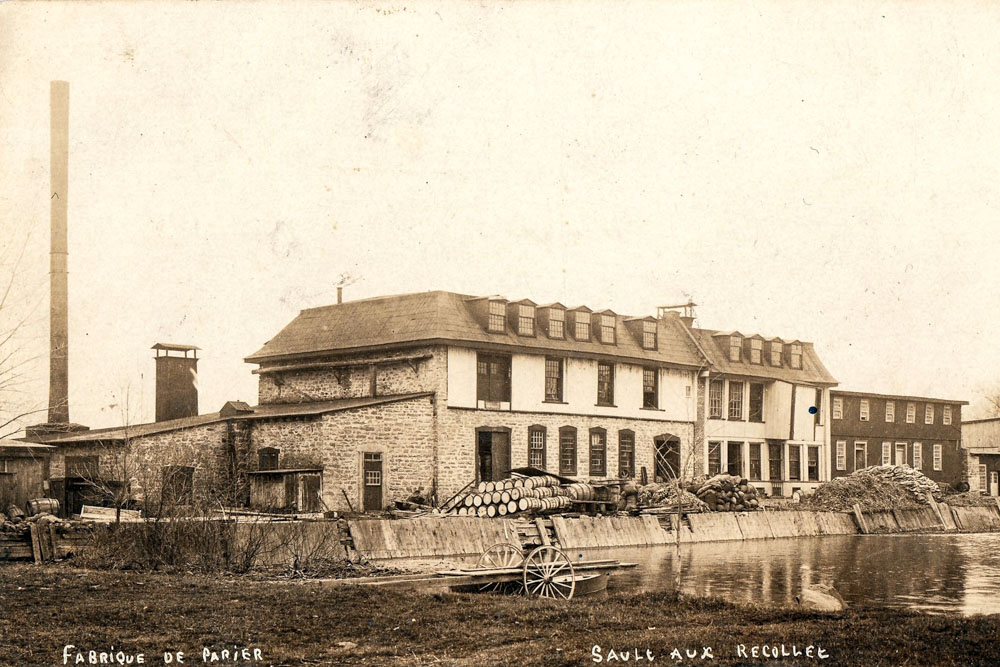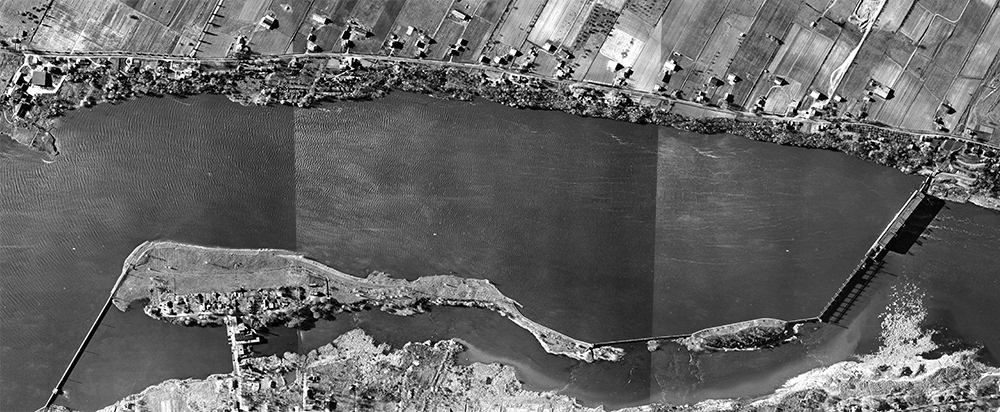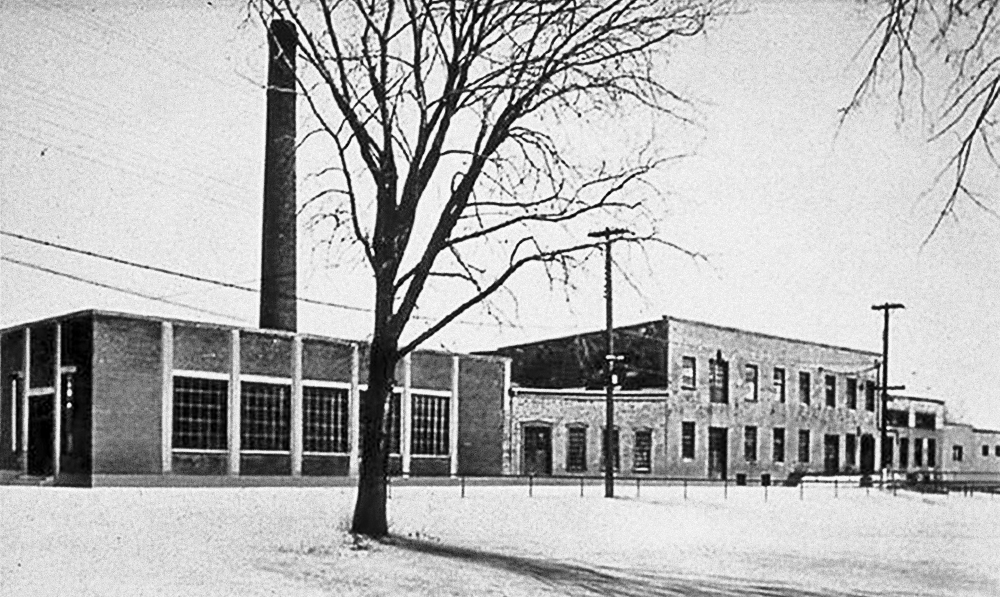The woodless paper mills
It is barely five o’clock in the morning and the parlour bell is ringing insistently. The Mother Superior opens the door to find a small boy carrying a suitcase twice his size. The orphan had walked alone all the way from the tramway station to the Saint-Janvier house. The Sisters of Mercy’s Superior picks up the boy’s surprisingly light luggage. The village beggar drops by the residence for his breakfast. He tells the nun: “That there suitcase is made from the old cardboard boxes and wool rags brought down to J. R. Walker in the lower part of town.”
News about the suitcase travels around the village. As it happens, the Sault-au-Récollet’s paper mills are looking for a stable buyer after having undergone many changes of ownership and bankruptcies. Fibreboard would open up a potential market for all types of products using wool rags. Not only are the raw materials plentiful in the nearby city, water power is free!

Postcard published around 1900: the paper mill with its tall smokestack overlooking the mills dike. In the foreground: barrels and a roll-in dock.
Mr. Walker’s Back River Power Company acquires the mills in 1906. These “woodless” paper mills now occupy the whole length of the dike, providing a living for over thirty families. The textile fibre is mixed with a pulp made of waste paper and cardboard.
Steel turbines produce more power than the large wooden water wheels, but their blades tend to freeze in winter when submerged in water. The mill fire of 1915 provided an opportunity to modernize the installations. New motorized electrical machinery capable of making all sorts of suitcases, packaging boxes required more power.
Back River Power obtained the right to build a hydroelectric power plant on the Des Prairies River in 1923, before ceding it to the Montreal Island Power Co. in 1925. The paper mills were operated by the Walker family until 1950.



